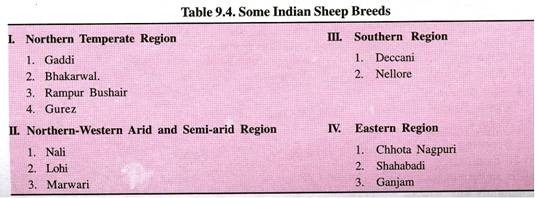ADVERTISEMENTS:
In this article we will discuss about:- 1. Definition of Down’s Syndrome 2. Physical and Physiological Features of Down’s Syndrome 3. Chromosomal Findings 4. Incidence 5. Causes.
Definition of Down’s Syndrome:
The first autosomal abnormality described in man by John Langdon Down (1966) was known as Down’s syndrome, more commonly used as mongolism. In this case, there is simple trisomy of chromosome 21, i.e. each cell containing three chromosomes of 21 rather than two.
The term “Mongolism” has been applied due to their facial characteristics (round, full face with upper eyelids turned downwards), very similar to that of the Mongolian race. It is impossible to be certain whether the trisomy involves chromosome 21 or 22 (of Gr. G) since they are morphologically identical. For this, it is sometimes called G-trisomy.
ADVERTISEMENTS:
1. In 1866, Down classified the types of idiots in his “On the ethnological classification of idiots” book.
2. Lejeune (1959) established that this particular class of idiots have three 21 chromosome (chr. or ch.).
3. Yunis (1963, ’65) used autoradiography technique at the later part of the “S” period, and labelled 21 chromosome as late replicating.
4. Egasce (1969) said that the size of the 22 is slightly larger than that of 21 chromosome (though controversial). So 21 and 22 differ from each other in their size.
ADVERTISEMENTS:
5. Caspersson (1970) used fluorescence microscopy to distinguish 21 chromosome from 22 chromosome. He found that the tip of the long arms of 21 chromosome is more brightly fluorescent than that of 22 chromosome, while short arm is lightly fluorescent in 21 chromosome. So 21 and 22 chromosomes can be distinguished by fluorescent microscope study.
6. Giemsa-banding technique is another technique where chemicals are used for staining and each chromosome pair shows specific banding pattern.
Since the fundamental discovery, there has been general agreement that the trisomic chromosome is 21, so that the preferred designation for the syndrome is “trisomy-21”.
Physical and Physiological Features of Down’s Syndrome:
1. Mentally retarded child.
2. I Q ≤ 50 3)
3. Dull and happy looking.
4. Less sensitive to external stimuli.
5. Individuals having very low birth-weight (mean = 2.83 kg.)
6. Skull is brachycephalic (short from front to back).
ADVERTISEMENTS:
7. A round, full face with epicanthic folds in their eyes. Here upper eyelid covers the lower eyelid. Brush filled spots i.e., light speckles around the margin of the iris, are present.
8. Nose from root to tip is short as well as flat and mouth with the lips in the shape of a Cupid’s bow.
9. Small, rotated ear.
10. A creased tongue.
ADVERTISEMENTS:
11. Short stature, stubby hands and feet.
12. On the palm, the two normal more or less diagonal main creases may be replaced by a single transverse crease — “the so-called Simian crease”.
13. Dermatoglyphics increased ulnar loops on fingertips (except the index finger and thumb).
14. Usually loops in the fingertips.
ADVERTISEMENTS:
15. atd < may be raised.
16. Little finger short, flexion is usually absent, incurved.
17. Feet normal but with wide gap between the 1st and 2nd toes.
18. A few babies have serious intestinal malformations, such as duodenal atresia.
ADVERTISEMENTS:
19. Congenital heart defects.
20. No sexual maturity.
21. In males, testicular degeneration and infertility seem to be the rule, with usually small, undescended testis.
22. In females the labia majora tend to be large and cushion-like and the labia minora are small or absent.
Chromosomal Findings in Down’s Syndrome:
There are 4 types of Karyotypes associated with Down’s Syndrome. Richards (1967) collected data from 1103 cases. Majority are primary 21 trisomies with no great risk of recurrence, but the other 3 types may all be associated with familial Down’s syndrome — in siblings and other relatives if there is an inherited translocation and in the offspring of the patient if he or she is a mosaic.
1. Trisomic — 94.4%
ADVERTISEMENTS:
(47, XX or XY, G+)
2. t(Dq. Gq) —1.5%
46, XX or XY — D, t (Dq. Gq) +
3. 46(XX or XY) G—, t(Gq. Gq) +1.7%
4. Myxoploid/Mosaic -2.3 to 2.5%
(46 XX or XY/47, XX or XY + G)
Incidence of Down’s Syndrome:
Mongoloid idiocy occurs once in each 500 or 600 births, being more frequent when mothers are older than the average. So, the incidence of mongolism in a mongoloid family depends on the maternal age and not on paternal age.
Causes of Down’s Syndrome:
A. Penrose (1965) has calculated that the risk of chromosomal aberrations which result in Down’s syndrome, increase with the maternal age.
He suggests the following possible causes:
i) Ova that become trisomic zygotes are, on the average, shed 10 years later than normal ova.
ii) Due to the presence of a very slowly growing intranuclear virus which divides once in every 2 ½ years, there would be a fourfold increase of risk in every 5 years from the date of first ovulation.
iii) The breakage of the spindle fibres which may be weaken with age. There are some 20 or more strands of spindle fibres attached to each centromere The process of ageing may affect the kinetochore system of at least certain chromosomes.
iv) A specific gene which disturbs the process of cell division may be involved in some cases.
v) Environmental influences such as radiation environmental stress, androgenic hormone increase high fluoride content of water and atmospheric pollution
Some of the developmental and immunological defects associated with Down’s Syndrome are hypersensitive to the CMI (Cell multiplication inhabitory) activities of human interferons.
B. Hanhart (1961) studied the chromosomes in a mongol mother and her affected daughters and demonstrated the presence of secondary nondisjunction.
Several causes of mongolism are:
a) Nondisjunction.
b) Translocation – specially Robertsonian translocation which arises through centromeric fusion.



